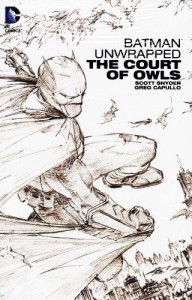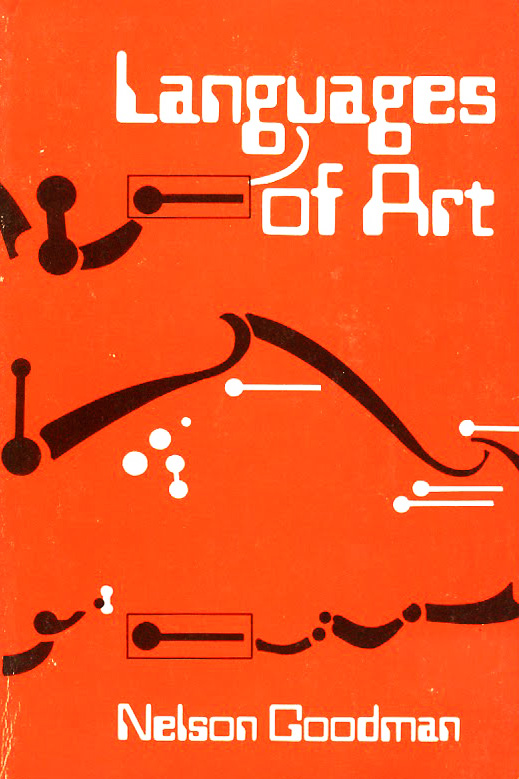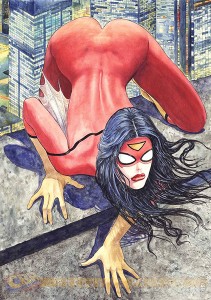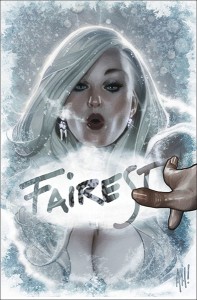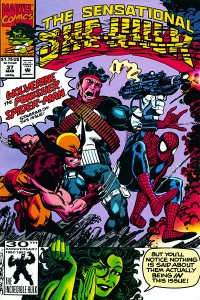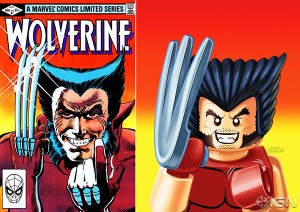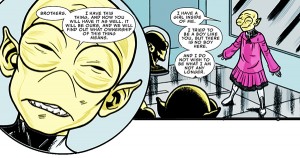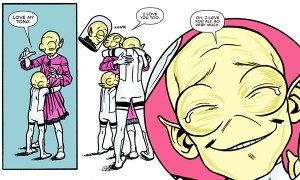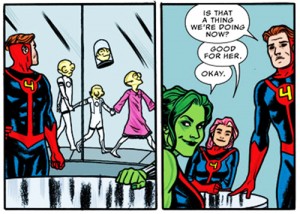This is the second installment in the PencilPanelPage roundtable on panel layout and Theirry Groensteen’s work (The System of Comics, Comics and Narration). Check out Adrielle Mitchell’s first installement in the series here!
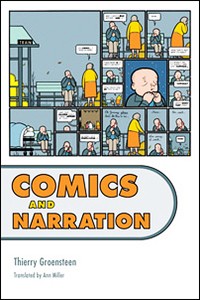 In Comics and Narration Thierry Groensteen introduces a four-part taxonomy by which we (or at least he) categorizes comics in terms of the nature and structure of panel layout. The taxonomy consists of different ways in which the payout of the panels might be more or less regular:
In Comics and Narration Thierry Groensteen introduces a four-part taxonomy by which we (or at least he) categorizes comics in terms of the nature and structure of panel layout. The taxonomy consists of different ways in which the payout of the panels might be more or less regular:
- Do all pages have the same panel layout (or are they all variations on a single such template, etc.)?
- Are all the tiers of panels on a particular page (or all the tiers in the comic, etc.) the same height?
- Are all the panels within a single tier (or all the panels on a page, or all the panels in the comic, etc.) the same width?
- What is the number of panels placed on each page (i.e. what is the density of the page)?
A page for which the answer to (2) and (3) is affirmative is a waffle-iron grid. Further, the more variation with respect to (2) and (3) found on a page, the more irregular the page. Factoring in (1), we also have a criterion for measuring (roughly) the regularity of the panel layout of an entire comic.
 The density of panels on a particular page – i.e. criterion (4) – while discussed at the same time as the first three criteria, is somewhat orthogonal to measuring the regularity of a page although variation in density from page to page obviously increases the irregularity of the comic in the relevant sense. Clearly, however, if the number of panels on a page varies from page to page, then as a matter of geometrical fact their layout must as well – thus, with regard to measuring regularity criterion (4) is redundant, subsumed under criterion (1).
The density of panels on a particular page – i.e. criterion (4) – while discussed at the same time as the first three criteria, is somewhat orthogonal to measuring the regularity of a page although variation in density from page to page obviously increases the irregularity of the comic in the relevant sense. Clearly, however, if the number of panels on a page varies from page to page, then as a matter of geometrical fact their layout must as well – thus, with regard to measuring regularity criterion (4) is redundant, subsumed under criterion (1).
This taxonomy is interesting, and allows us to categorize comics in terms of three distinct (although not completely independent) dimensions: the regularity of panel height (on a page), the regularity of panel width (in a tier or on a page), and the uniformity of these when considered page-to-page. Taxonomy is, of course, a wonderful tool for analysis and explanation, but a taxonomy is only as good as the explanation of, and analysis of, the relevant phenomena that it provides.
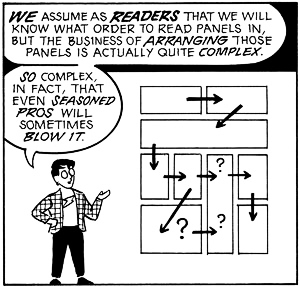 Digression: One pet peeve of mine is the tendency of scholar in the humanities – comics scholars definitely included – who propose taxonomies as if a system of categories is an intellectual end in and of itself (and as if they are following a more ‘scientific’ methodology). A taxonomy is a tool, however, not a result.
Digression: One pet peeve of mine is the tendency of scholar in the humanities – comics scholars definitely included – who propose taxonomies as if a system of categories is an intellectual end in and of itself (and as if they are following a more ‘scientific’ methodology). A taxonomy is a tool, however, not a result.
So, the obvious question is this: Are there any theoretical questions that can be answered by attending to the complex geometrical framework for analyzing comics panel layout provided by Groensteen? Groensteen seems to think so: he argues that, in general, the more regular the panel layout, the better the comic and its narrative (all else being equal). His argument for this claim is somewhat indirect – he identifies a regularity-eschewing ‘movement’ in comics, which he calls the neo-baroque and characterizes as preferring:
… the destructuring of the hyperframe by images that bleed off the edge of the page and intrusions into the gutter, the use of multiple insets, the maximization of the contrast between large background images and the inset panels, the vertical or horizontal elongation of panels (as if to achieve a shape as far removed from the square as possible!), and the frequent stacking of very narrow horizontal panels… (Comics and Narration p. 47).
Groensteen stridently disapproves of such strayings from the waffle-iron way of truth:
It is as if the simple succession of panels was no longer deemed sufficient to ensure the production of meaning: the apparatus must become more sophisticated (or more hysterical) by piling special effect upon special effect (Comics and Narration, p. 47).
It is worth noting that Groensteen’s complaints have a bit of a Euro-elitist tone to them: He explicitly blames the neo-baroque movement on the pernicious influence of manga (pp. 47, 61) and 1980s American superhero comics (p. 47, fn. 17, p. 61).
Setting this aside, however, it is worth asking whether Groensteen could be right: Are some panel layouts (and maximally regular waffle-iron grids in particular) better suited for effective narratives than others? There are two possible questions one could ask here:
- In general, are comics better the more regular their panel layout?
- If comics had to restrict itself to a single layout, would a more regular layout be better than a less regular one?
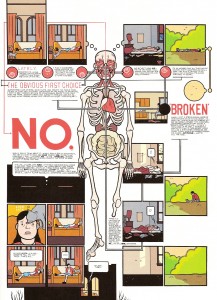 Groensteen seems to think the answer to the first question is affirmative, but I just can’t see how this could be the case. As many scholars have argued (and see the predecessor to this post by Adrielle for some evidence) panel layout can be carefully attuned to the type of story being told and the way in which the teller is telling it, resulting in narrative effects that are both theoretically interesting and likely unachievable by other, more ‘traditional’ means. Chris Ware’s work, for example, would be far less compelling had it been produced in a regular 3×3 grid (interestingly, Ware somehow gets a pass from Groensteen, despite his vast deviations from panel regularity in Groensteen’s sense.)
Groensteen seems to think the answer to the first question is affirmative, but I just can’t see how this could be the case. As many scholars have argued (and see the predecessor to this post by Adrielle for some evidence) panel layout can be carefully attuned to the type of story being told and the way in which the teller is telling it, resulting in narrative effects that are both theoretically interesting and likely unachievable by other, more ‘traditional’ means. Chris Ware’s work, for example, would be far less compelling had it been produced in a regular 3×3 grid (interestingly, Ware somehow gets a pass from Groensteen, despite his vast deviations from panel regularity in Groensteen’s sense.)
More promising, perhaps, is the second question (although it is not, I think, what Groensteen himself has in mind): If all comics had to be produced with the exact same panel layout, would a regular one be preferable? The answer here might be affirmative – it might be the case that a regular waffle-grid is neutral in a certain formal sense, so that it is amenable to functioning in all sorts of different narrative environments in a non-interfering manner (although the positive contributions of panel layout of the sort mentioned in the previous paragraph would be ruled out). Of course, certain metafictional comics that make direct use of panel layout would be impossible. But the second weaker claim regarding super-regular waffle grids does not seem immediately absurd in the way the first does.
So, are some panel layouts inherently superior to others?

 This isn’t a goodbye, however, but merely a transition into a new, more flexible format. All of us plan to continue to post on The Hooded Utilitarian on a more occasional basis – as often as the ideas keep coming and the time to write them up is available. We’ll continue to use the PencilPanelPage imprint for our posts, and we’ll also stay on the lookout for exciting guest bloggers as well. PencilPanelPage has been an amazing, and educational, experience for all of us, and we won’t give that up entirely without a fight!
This isn’t a goodbye, however, but merely a transition into a new, more flexible format. All of us plan to continue to post on The Hooded Utilitarian on a more occasional basis – as often as the ideas keep coming and the time to write them up is available. We’ll continue to use the PencilPanelPage imprint for our posts, and we’ll also stay on the lookout for exciting guest bloggers as well. PencilPanelPage has been an amazing, and educational, experience for all of us, and we won’t give that up entirely without a fight!
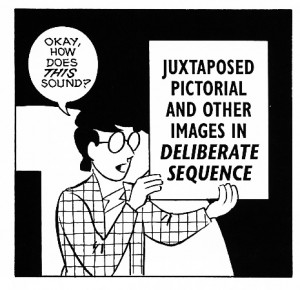 First, we have formal, aesthetic, and/or moral definitions of comics roughly paralleling traditional, pre-twentieth century definitions of art. Nontable examples include David Kunzle (The Early Comic Strip: Narrative Strips and Picture Stories in the European Broadsheet from c. 1450 to 1825, 1973), Will Eisner (Comics and Sequential Art, 1985), Scott McCloud (Understanding Comics: The Invisible Art, 1993), David Carrier (The Aesthetics of Comics, 2000), and Thierry Groensteen (The System of Comics, 1999/2007). Comparisons are easily made to Plato, Kant, and even John Dewey’s accounts of the nature of art. But, just as the second-half of the twentieth century saw a widespread rejection of any such account of the nature of art that entails that an object is an artwork solely in terms of some properties (whether formal, aesthetic, or moral) that inhere in the object itself, during the early twenty-first century comic studies has seen a similar turn away from formal definitions in favor of other approaches. Interestingly, the three main alternative approaches to defining comics match almost exactly the three main approaches found in earlier, twentieth century work on defining art.
First, we have formal, aesthetic, and/or moral definitions of comics roughly paralleling traditional, pre-twentieth century definitions of art. Nontable examples include David Kunzle (The Early Comic Strip: Narrative Strips and Picture Stories in the European Broadsheet from c. 1450 to 1825, 1973), Will Eisner (Comics and Sequential Art, 1985), Scott McCloud (Understanding Comics: The Invisible Art, 1993), David Carrier (The Aesthetics of Comics, 2000), and Thierry Groensteen (The System of Comics, 1999/2007). Comparisons are easily made to Plato, Kant, and even John Dewey’s accounts of the nature of art. But, just as the second-half of the twentieth century saw a widespread rejection of any such account of the nature of art that entails that an object is an artwork solely in terms of some properties (whether formal, aesthetic, or moral) that inhere in the object itself, during the early twenty-first century comic studies has seen a similar turn away from formal definitions in favor of other approaches. Interestingly, the three main alternative approaches to defining comics match almost exactly the three main approaches found in earlier, twentieth century work on defining art.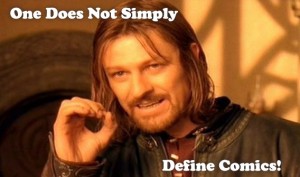
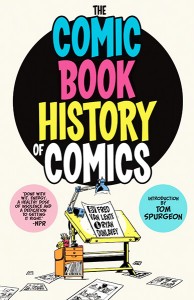
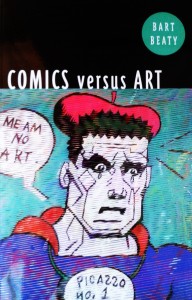
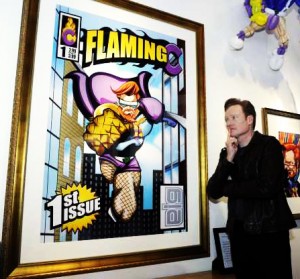 Thus, the work on defining comics has closely mimicked earlier debates about the definition of, and nature of, the larger category of art (presumably, all, most, or at least typical comics are artworks – even if possibly bad artworks – solely in virtue of being comics). This much seems undeniable, but it also seems somewhat problematic. After all, sticking solely to approaches and strategies that appeared plausible when used to define art is only a wise strategy if we have some sort of prior conviction that the properties and relations that make an object an artwork (i.e. that explain the artwork/non-artwork distinction) are the same properties and relations (or at the very least, the same kind of properties and relations) that make an object a comic (i.e. that explain the comic/non-comic distinction). And to my knowledge no argument has been given that this is the case. As a result, it behooves us to ask if comic studies has been too traditional, and too unimaginative, in this regard. Isn’t it possible that we could be convinced that there is an adequate definition of comics, but also convinced that such a definition should look very different from extant attempts at defining art (i.e. it would take very different kinds of factors into consideration)? And, more to the point, isn’t it possible that such an attitude could be correct? If so, then the close parallel between work on the definition of comics and work on the definition of art seems unfortunate, since it seems to ignore this possibility in favor of recapitulation of past history.
Thus, the work on defining comics has closely mimicked earlier debates about the definition of, and nature of, the larger category of art (presumably, all, most, or at least typical comics are artworks – even if possibly bad artworks – solely in virtue of being comics). This much seems undeniable, but it also seems somewhat problematic. After all, sticking solely to approaches and strategies that appeared plausible when used to define art is only a wise strategy if we have some sort of prior conviction that the properties and relations that make an object an artwork (i.e. that explain the artwork/non-artwork distinction) are the same properties and relations (or at the very least, the same kind of properties and relations) that make an object a comic (i.e. that explain the comic/non-comic distinction). And to my knowledge no argument has been given that this is the case. As a result, it behooves us to ask if comic studies has been too traditional, and too unimaginative, in this regard. Isn’t it possible that we could be convinced that there is an adequate definition of comics, but also convinced that such a definition should look very different from extant attempts at defining art (i.e. it would take very different kinds of factors into consideration)? And, more to the point, isn’t it possible that such an attitude could be correct? If so, then the close parallel between work on the definition of comics and work on the definition of art seems unfortunate, since it seems to ignore this possibility in favor of recapitulation of past history.